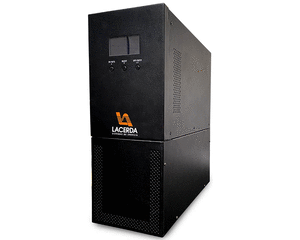quarta-feira, 6 de dezembro de 2017
Doctoral Thesis A Study on High Efficiency Bidirectional Grid-tied Converters -Sung-Ho Lee (이 성 호) Department of Electrical Engineering Pohang University of Science and Technology
Doctoral Thesis
A Study on High Efficiency Bidirectional Grid-tied Converters Sung-Ho Lee (이 성 호)
Department of Electrical Engineering Pohang University of Science and Technology 2016
ABSTRACT
This thesis presents three high efficiency grid-tied converter topologies and their respective control algorithms. These converters are applicable to various industrial fields such as energy storage systems (ESS), renewable energy systems, uninterruptible power supply (UPS) systems, and electric vehicles (EV). First, a high efficiency bidirectional grid-tied flyback converter that uses a single power conversion technique and a control system for it are introduced. The proposed converter consists of a bidirectional flyback dc-dc converter and an unfolding circuit. Due to its switching control strategy, the proposed converter performs bidirectional power conversion between the energy storage device and the grid through only single step. From the model analysis, the inherent dynamic characteristics are figured out. Based on the analysis, a control system is developed, which consists of a linear feedback controller with a low pass filter, a repetitive controller, and a feed-forward controller; this overcomes the constrains caused by a right-half-plane zero and a filter resonance and makes the proposed converter achieve the desired control performances and stability. In conclusion, the proposed converter can obtain high efficiency using a single power conversion technique, and the developed control system makes the proposed converter feasible. Second, a high efficiency single-phase bidirectional inverter for a PV energy system integrated with an energy storage system. The proposed single-phase inverter is developed using the transformerless system configuration so that it provides high power conversion efficiency, excellent power density, and low production cost. Using its circuit structure and switching operation, the proposed inverter can suppress the ground leakage current which is considered to be one of the most important design parameters in a transformerless PV system. Therefore, the proposed inverter gives the feasibility for the transforemrless system configuration in a PV energy system integrated with an energy storage system and enhances the overall performance of the bidirectional power converter system. The third is a novel high efficiency three-phase bidirectional grid-tied converter with high power density for high power applications. The proposed converter is composed of the threelevel dc-dc converter and the modified three-phase T-type three-level inverter. The threelevel converter circuit configuration gives smaller passive component size and lower switch voltage stress compared to other two-level grid-tied converters. In addition, due to its novel circuit structure, the proposed converter can use the active and passive components for only two phases of the grid in the inverter stage and eliminate the leakage current problem. Thus, because the proposed converter enables to not only decrease the number of components but also make the transformerless configuration feasible, it provides higher efficiency and higher power density compared to other high power grid-tied converters. All proposed converters are analyzed theoretically, and implemented practically.
Assinar:
Postar comentários (Atom)
















































Nenhum comentário:
Postar um comentário